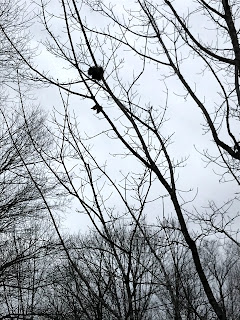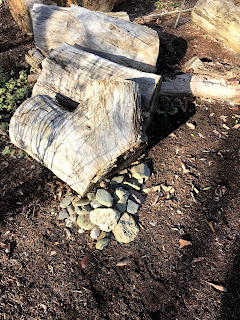It's interesting to observe the changes in the world distilled into the activities taking place in my own back yard. When I'm eating breakfast and looking out the window, the first thing I see is the bluebird house.
Wintertime bluebird activity has changed over the years. Used to be said activity was nil. There weren't any bluebirds here in the winter. You might start to see some around the end of February as spring approached. A few years ago I remember Ellen mentioning that she saw them all year round during the winter that she lived here. Now I see them maybe once a week. and it's not just one or two, it's five or six, and they're hanging around the birdhouse in the morning for awhile, and then I don't see them again for days. I've learned that they look for dry cavities, like bluebird houses, in which they can roost during the winter months. I think that's what they're doing.
I came across a great article yesterday. The gist of it was that the range of eastern bluebirds is moving northward. That they are becoming more prevalent in places like Maine, and their numbers are dropping in places like the Mid-Atlantic states.
Here it is: https://maineaudubon.org/news/bluebirds-in-winter/
They attributed the change to a number of factors, but, surprisingly, didn't mention climate change. I'm not a scientist, but I feel that is a major factor.
My neighbor is my age, and has lived in the area his whole life. He says that when he was a kid, you didn't see animals like great blue herons or opossums. It was too cold for them here. Now they are very common, like ticks. Unfortunately, as some animals appear in the area, others depart. I don't hear the wood thrush singing in the back the way I used to. The moose population is diminishing, and even the sugar maples are stressed by the warming conditions. It's sad to see.


















































